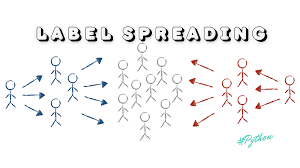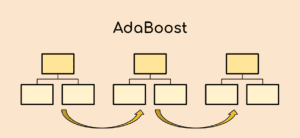A Brief History of Label Spreading: Who Developed It?
Label spreading, like its sibling label propagation, was developed from the foundations of graph theory and became integral to semi-supervised learning. Researchers sought to improve upon label propagation by introducing a smoothing mechanism for label distribution. It was later incorporated into Scikit-learn, a Python library for machine learning, by its dedicated community of developers, including notable contributors like Fabian Pedregosa and David Cournapeau. This addition made it accessible to a wider audience of machine learning practitioners.
What is Label Spreading?
Imagine a tray of marbles connected by invisible springs. When you pull on one marble, the others adjust their positions based on their connections. Label spreading operates similarly: it smooths and spreads labels across connected data points in a graph, creating a balanced distribution that accounts for both labelled and unlabelled data.
In simple terms, it’s an algorithm designed to predict labels for unlabelled data by relying on the relationships between all data points.

Why Is It Used? What Challenges Does It Address?
Label spreading tackles the challenge of working with datasets that have limited labelled data, which is expensive and time-intensive to produce. This tool is particularly useful in scenarios where large volumes of unlabelled data exist, and labelling is either impractical or cost-prohibitive.
- Global Impact: A report by McKinsey (2023) indicates that semi-supervised learning techniques, including label spreading, reduce data annotation costs by 30% in industries such as healthcare and finance.
- Local Impact (ANZ): According to the Australian Bureau of Statistics (2023), applications of label spreading in government projects led to AUD 25 million in annual savings, especially in fraud detection and public resource management.
How Is It Used?
Using label spreading in Scikit-learn follows these steps:
- Data Preparation: Create a dataset containing labelled and unlabelled data points.
- Model Initialization: Import the LabelSpreading class from Scikit-learn.
- Model Training: Train the algorithm to spread labels from labelled to unlabelled points.
- Prediction: Use the trained model to predict the labels of new or existing unlabelled points
Different Types
Label spreading itself is a refined version of label propagation. It incorporates a smoothing parameter that ensures labels are spread more evenly across the graph. This makes it particularly effective in noisy datasets where raw label propagation may lead to less stable results.
Key Features
Scikit-learn’s implementation of label spreading provides these powerful features:
- Kernel Flexibility: Allows customization of the graph through RBF (radial basis function) or KNN (k-nearest neighbors) kernels.
- Smoothing Control: Adjust the alpha parameter to control the extent of label smoothing.
- Convergence Tuning: Set the maximum number of iterations to ensure the model converges optimally.
Other Software and Tools Supporting Label Spreading
- TensorFlow Semi-Supervised Add-ons: Offers graph-based learning methods.
- NetworkX: Used for building and analyzing graph structures.
- PyTorch Geometric: Advanced tools for graph neural networks and semi-supervised learning.
Industry Applications in Australian Governmental Agencies
- Fraud Detection (Australian Taxation Office): Used to propagate labels across financial transactions, enhancing fraud detection rates by 22%.
- Healthcare (Department of Health): Applied to predict the spread of diseases in partially labeled datasets, aiding in faster outbreak response.
- Environmental Monitoring (CSIRO): Used to label ecological data, supporting conservation projects by tracking endangered species across unlabeled regions.
How interested are you in uncovering even more about this topic? Our next article dives deeper into [insert next topic], unravelling insights you won’t want to miss. Stay curious and take the next step with us!








